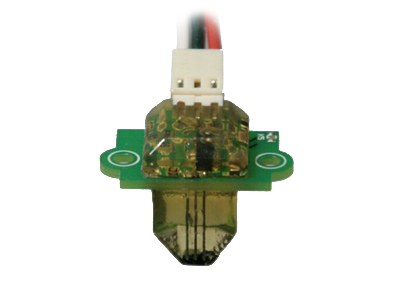
Speedpuls

Digital speedometer signal for the VW Bulli T3 or for vehicles with identical speedometers.
Ideal VSS signal transmitter for engine conversions, cruise control and navigation systems.
Possible applications
NAVIGATION SYSTEMS
- Alpine
- Becker
- Blaupunkt
- Clarion
- Medion
- Pioneer
- VDO
- VW multifunction display (MFD)
So far EVERY sat nav has worked with the module. 100% success rate!
TEMPOMATE
- VDO (12V version required)
- VW original cruise control (e.g. Carat)
- Waeco MS 50
- Waeco MS 200/300/400 (12V version)
- Zemco Pilotomat
ENGINE CONTROL UNITS
- Engine code letter AFN, 1Z, ... (12V variant) practically every Volkswagen engine between 1993 and 2005 was compatible up to now
- Siemens (SiMos) control units (ADY) require the 5V version of the module
- Bosch control units require the 12V version of the module
- Subaru conversion to EJ22, EJ25, EG33 (5V variant)
VEHICLES
- Golf 1 after model year 84 (see pictures)
- Golf 2
- VW Bus T3
- Vehicles with identical speedometers such as Caddy or Jetta
- Special mounting is possible for the Beetle 1303
TDI CONTROL UNITS
1Z, AFN, ADY, AHU, and all others...
Die Technik
How does the Speedpuls work
Installation position
The module is screwed into the existing opening of the speedometer for the VW Gala encoder. The speedometer itself does not need to be modified or processed for this, only the locking tab is removed, which closes the installation opening if necessary.
The installation of the module can be easily reversed. With other solutions, speedometer cables are cut and crimped again or splitter gears are used, all of which is not necessary here.
The module works completely contact-free. With comparable solutions, the speedometer needle often "jitters" due to the intervention in the speedometer cable. This is eliminated here.
Differences to the VW GALA sensor
The VW GALA sensor is based on an inductive sensor principle, similar to a bicycle dynamo. The magnetic field of the disk induces an alternating voltage in the coil of the sensor, the frequency of which depends on the speed of the speedometer cable.
The disadvantage of this solution follows from its similarity to a dynamo: the signal level is also dependent on the speed!
Especially when driving slowly, the Gala encoder only generates signal levels of well below 5V, which can no longer be processed by most end devices. Although so-called "pulse doubler relays" are available to compensate for this disadvantage, the cost of these alone is over 50 euros, if they are still available at all.
Functional principle of the Hall sensor
The Hall sensor has nothing to do with sound in the sense of echo, but is named after its inventor Edwin Hall. Based on the Hall effect, the sensor reacts to magnetic fields and scans the magnetic disk rotating with the speedometer cable in the standard speedometer.
The "Hall plate" is cast into the tip of the sensor and is directed towards the existing magnetic disk in the speedometer. This disk rotates with the speedometer cable and forms the magnetic "driver" for the speedometer needle.
The disc is magnetized in sectors and has four magnetic south poles per revolution of the speedometer cable, which activate the Hall sensor, i.e. four digital pulses are generated per revolution of the speedometer cable.
As the sensor principle here only requires the presence of a magnetic field and is not dependent on how quickly this magnetic field changes, the signal level is also independent of the speed. This guarantees a clean speed signal until the vehicle comes to a standstill.
The module is equipped with a 5V voltage regulator and initially produces an output signal at 5V. Alternatively, the voltage regulator can be switched off, in which case the output signal level corresponds to the incoming on-board voltage (12V). This "switching off" is done by placing a single solder joint and can be done at any time, even retrospectively. With the 5V version, fluctuations in the on-board voltage are regulated down to a few millivolts.
The circuit has reverse polarity protection and can be operated safely up to max. 16V (continuous) input voltage. Up to 24V may also be applied for short periods.
After installation, the function of the module can be checked directly by the built-in LED. When the speedometer cable is turned by hand or with a small screwdriver, the LED flashes four times per revolution.
This solution is considerably cheaper than a split speedometer cable, much less complex and more robust than glued-on magnets with reed switches and more precise than the GALA encoder. You will receive a fully assembled, adjusted and tested module with approx. 50 cm of connecting cable and mounting material.
Odometer number
The different speedometers are marked with a distance figure (k-figure) - this is the small number on the dial directly above the reset button of the trip odometer. The number indicates the number of revolutions of the speedometer shaft per kilometer.
Modern applications use the so-called distance pulse number (WIZ), i.e. a certain number of electrical pulses per kilometer. Typical for VW vehicles (TDI) is a WIZ of approx. 4000 pulses per kilometer.
In order to be able to offer 4000 pulses/km for every speedometer, there are two versions of the Speedpuls module: The SP-T3-4P and the SP-T3-8P module.
The 4P module generates 4 electrical pulses per revolution of the speedometer shaft. With a k number of approx. 1000 (T3-Syncro, Golf2, etc.), this results in 4000 pulses per revolution.
The 8P module generates 8 electrical pulses per tachometer shaft revolution. With a k number of approx. 500 (T3-2WD), this results in 4000 pulses per revolution.
Of course, other combinations are also possible: 2WD speedometer: W=500 ⇢ 500 speedometer shaft revolutions per km ⇢ with 4P module ⇢ 2000 pulses per km 2WD speedometer: W=500 ⇢ 500 speedometer shaft revolutions per km ⇢ with 8P module ⇢ 4000 pulses per km 4WD speedometer: W=1000 ⇢ 1000 speedometer shaft revolutions per km ⇢ with 4P module ⇢ 4000 pulses per km 4WD speedometer: W=1000 ⇢ 1000 speedometer shaft revolutions per km ⇢ with 8P module ⇢ 8000 pulses per km Golf2 speedometer: W= 960 ⇢ 960 speedometer shaft revolutions per km ⇢ with 4P module ⇢ 3840 pulses per km By selecting the correct module for the respective speedometer, a sufficiently accurate WIZ can usually be generated.
Navigation systems are unproblematic, they calibrate themselves via GPS to any distance pulse number offered.
Sources of supply:
Germany:
MyBusParts
 {.right}
www.mybusparts.de
{.right}
www.mybusparts.de



